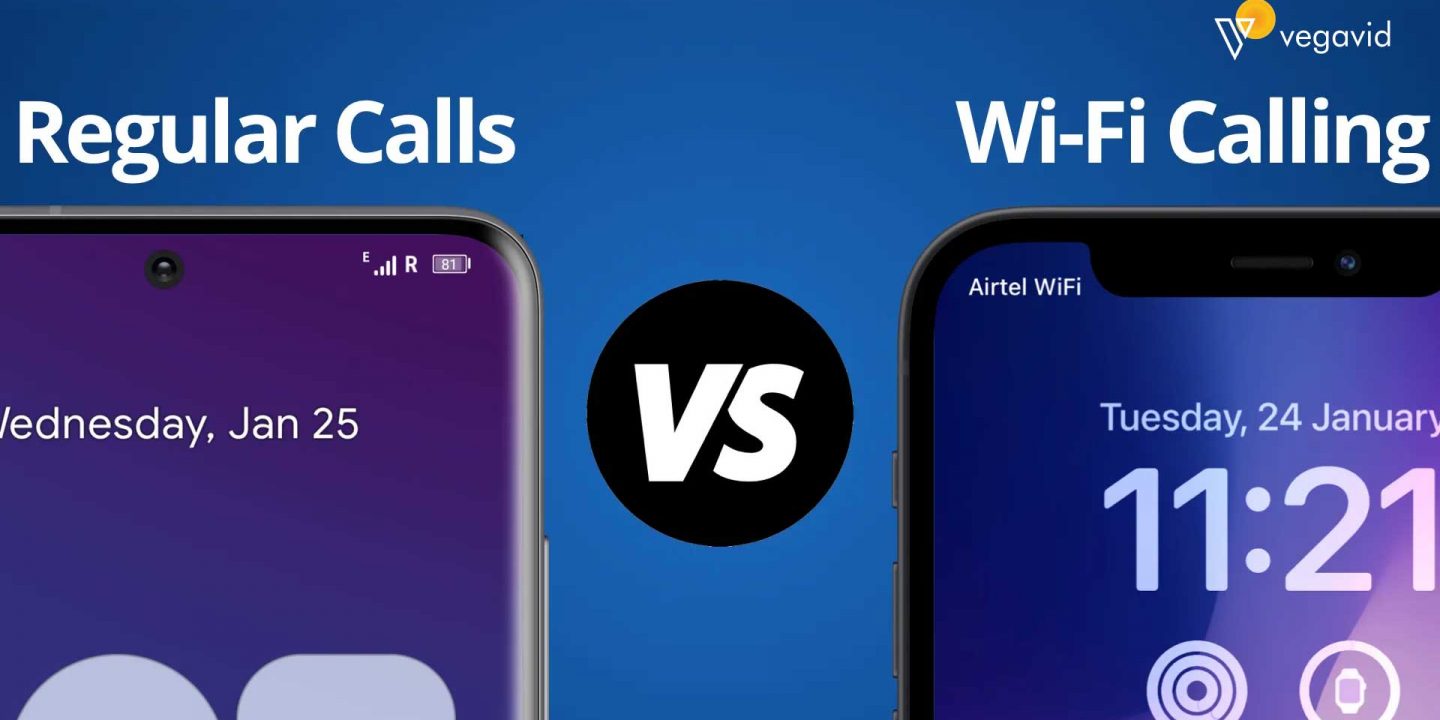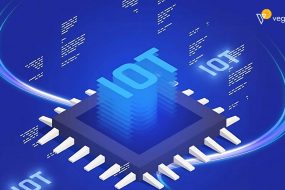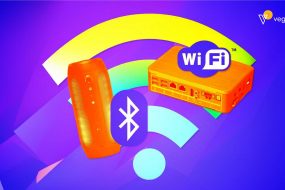
As more “things” become connected to the internet, choosing the right wireless connectivity for IoT devices is an important consideration. Wi-Fi and cellular are the two main network options, but which is a better fit depends on the specific IoT application. This blog post evaluates key factors like costs, security, coverage, bandwidth, and power usage to compare Wi-Fi and cellular connectivity. Understanding the tradeoffs will help determine the best network for individual IoT projects.
Wi-Fi tends to be preferable for stationary devices within confined areas due to its lower setup costs and power efficiency. Cellular provides extensive coverage for mobile or remote devices, though with higher ongoing access fees. By analyzing requirements, organizations can identify the most suitable option to deliver their IoT solution.
Wi-Fi for IoT
Wi-Fi is a popular wireless technology for connecting IoT devices locally within a place like a home or office. It provides reliable short-range connectivity for devices through an existing Wi-Fi network and router. Many IoT devices like smart home appliances, sensors, and cameras integrate Wi-Fi compatibility as it allows seamless integration into a network without additional infrastructure. Wi-Fi networks are also easy to set up and most homes and offices already have a Wi-Fi network in place. The ubiquitous availability of public
Wi-Fi hotspots also allow devices to connect when away from home networks. However, Wi-Fi connectivity requires devices to be in the range of the network router. It may not be suitable for applications requiring connectivity beyond the router range or in outdoor environments without available hotspots. The use of Wi-Fi also increases with the number of connected devices which can lead to network congestion issues.
Cellular for IoT
Cellular connectivity uses available cellular networks like 3G, 4G, or future 5G networks that provide wide-area connectivity for IoT devices over large geographical ranges. This makes cellular a popular choice for devices and sensors deployed outdoors or across cities, countries, and even globally. Cellular modules in IoT devices allow them to get online and remain reachable as long as they are within the cellular network coverage area. The large-scale coverage of major cellular networks especially in developed countries ensures that devices can connect to the network from almost anywhere.
However, cellular connectivity comes with higher costs compared to Wi-Fi due to cellular data plans and modules. It also consumes more power due to continuous network searches. Complex device certification for cellular connectivity can increase development challenges as well.
Wi-Fi vs. Cellular: IoT Feature Comparison
Here are Wi-Fi vs. Cellular: IoT Feature Comparison are –
Cost
When it comes to the overall connectivity costs for IoT projects, Wi-Fi and cellular each have their own advantages and disadvantages. For many IoT applications situated within homes and offices, the Wi-Fi infrastructure is likely to be already present since the majority of households now have a Wi-Fi router. In such cases, adding IoT devices to the existing network brings little to no additional cost for connectivity. However, setting up Wi-Fi networks for applications covering wide areas or with a large number of devices involved can drive up costs substantially with the need for additional routers, switches, cables, and installation expenses.
Cellular connectivity through purchased data plans for the devices is more affordable to implement over large deployments and wide geographical ranges. But these cellular networks incur ongoing expenses through monthly data plan charges. Upfront costs of cellular modules also tend to be higher than Wi-Fi. The overall total cost of ownership needs evaluation for accurate comparisons.
Security and Privacy
When it comes to security and privacy, there are differences between Wi-Fi and cellular connectivity. Wi-Fi networks are vulnerable to certain local attacks since the wireless signals can potentially be intercepted within range. This makes securing Wi-Fi networks crucial through measures like passwords, encryption, and firewalls. Any inadequately protected Wi-Fi deployment with IoT devices could enable potential threats.
In contrast, cellular networks employ greater levels of encryption and isolations of device communications thanks to dedicated spectrum and protocols. This makes intercepting cellular data more difficult and enhances the privacy of communications. However, cellular networks could still be susceptible to vulnerabilities inside the core network infrastructure. Overall, cellular connectivity offers an inherently higher level of security although proper security mechanisms are needed in both cases.
Location Detection
Location detection is an important capability for many IoT use cases. Wi-Fi provides an advantage for indoor positioning and navigation applications through techniques like triangulation of devices within its range. This makes it well-suited for applications like smart factories, warehouses, and malls requiring accurate positioning without GPS. However, Wi-Fi’s limitations arise outdoors and beyond the network range.
On the other hand, cellular connectivity supports strong location services through network-based techniques that can locate any device within its wide coverage area accurately using mechanisms like GPS and cell tower IDs. This enables robust outdoor application scenarios like fleet management, asset tracking, and navigation across cities and countries. However, cellular may not provide equivalent finesse for indoor mapping.
Coverage
The coverage range is an important differentiator between Wi-Fi and cellular connectivity. Wi-Fi networks have a limited range depending on the router, interference, and obstacles. The effective coverage is usually constrained within a radius of about 30-100 meters. This makes Wi-Fi unsuitable for applications requiring connectivity across larger outdoor areas or where devices are mobile over long distances.
In contrast, cellular networks like 3G and 4G provide extensive coverage spanning whole countries, continents, and in most cases globally. Even remote and rural areas are frequently served by affordable cellular networks. This allows IoT devices with cellular modules to remain online seamlessly regardless of location. However, maintaining ubiquitous coverage does come at the cost of more complex network infrastructure for cellular providers.
Bandwidth
The available bandwidth is an important metric when selecting connectivity for IoT solutions that involve a transfer of data. Wi-Fi with technologies like 802.11ac can provide bandwidth of over 1 Gbps theoretically and works well for applications requiring high-speed local data transfers, like accessing HD video feeds from a network of security cameras. However, Wi-Fi bandwidth degrades rapidly with distance from the router.
Cellular networks still lag Wi-Fi in peak speeds currently but upgrades to 4G/LTE provide adequate bandwidth for most IoT use cases involving modest data uploads, like telemetry and usage information from remote assets. 5G technology promises multi-Gbps speeds on par with Wi-Fi eventually. But till then, cellular bandwidth works well for IoT when data quantity is less, which covers many applications.
Power Usage
When it comes to power consumption, cellular connectivity can be more battery intensive for IoT devices compared to Wi-Fi. Cellular radios typically use more power than Wi-Fi radios as they have broader coverage areas to transmit over. Maintaining a continuous cellular connection to send and receive data can significantly drain batteries faster over time.
On the other hand, Wi-Fi connections are typically more intermittent with devices disconnecting when not in use. New cellular technologies like LTE-M and NB-IoT have been optimized for lower power use, but Wi-Fi still has an advantage with its ability to leverage deep sleep modes between communications. Some cellular networks also now support intermittent connectivity and Power Saving Modes to improve battery life. Overall, the longer transmission ranges of cellular networks mean the radio components draw more power, making Wi-Fi typically require less power usage and better suited for battery-constrained IoT applications with long battery lives.
Wi-Fi vs. Cellular: Which Is Better for Your IoT Project?
Ultimately, there’s no single right answer for whether or not Wi-Fi or cell is better – it depends on the precise IoT task requirements and uses case. Wi-Fi can be most desirable for programs that contain static devices inside a limited region like a home or workplace wherein putting in place a wireless community is viable. It offers inexpensive set-up fees, better strength performance, and ok bandwidth for most IoT uses.
Cellular wins out for programs involving mobile or transient gadgets that need connectivity everywhere beyond a single area. The full-size community coverage of mobile vendors lets in for dependable connections even in remote regions. However, mobile comes with higher ongoing get entry to prices and reduced battery lifestyles. For initiatives with infrequent or low-bandwidth information, the slightly better set-up price of the cell may additionally still be worth it over Wi-Fi. By evaluating factors like fees, security, insurance area, mobility needs, and strength constraints, companies can discover whether or not Wi-Fi or cell connectivity makes the most sense for turning in their IoT challenge necessities price-successfully.
Conclusion
In conclusion, each Wi-Fi and cellular networks have valid use cases for connecting IoT gadgets, depending on every project’s particular desires. Wi-Fi is typically extra fee powerful and energy efficient for static devices installed within a constrained area with a current wireless network. Cellular insurance extends in addition to reliable connections anywhere, making it greater appropriate for cellular or brief gadgets requiring connectivity past an unmarried area.
While cell setup can be extra high-priced, to begin with, its big network attains should outweigh the expenses for programs needing far off get right of entry to. By weighing elements like mobility, information utilization, protection, and power constraints, the tradeoffs highlighted in this comparison can assist agencies determine whether or not Wi-Fi or cell is the most effective connectivity desire to deliver their precise IoT vision.











